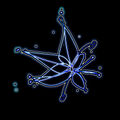Template:Selected anniversaries/September 26: Difference between revisions
No edit summary |
No edit summary |
||
| Line 47: | Line 47: | ||
||1887: Barnes Wallis born ... scientist and engineer, invented the Bouncing bomb. | ||1887: Barnes Wallis born ... scientist and engineer, invented the Bouncing bomb. | ||
||1891: Hans Reichenbach born ... philosopher of science, educator, and proponent of logical empiricism. He was influential in the areas of science, education, and of logical empiricism: he made lasting contributions to the study of empiricism based on a theory of probability; the logic and the philosophy of mathematics; space, time, and relativity theory; analysis of probabilistic reasoning; and quantum mechanics. | ||1891: Hans Reichenbach born ... philosopher of science, educator, and proponent of logical empiricism. He was influential in the areas of science, education, and of logical empiricism: he made lasting contributions to the study of empiricism based on a theory of probability; the logic and the philosophy of mathematics; space, time, and relativity theory; analysis of probabilistic reasoning; and quantum mechanics. Pic. | ||
||1905: George Placzek born ... physicist. Together with Otto Frisch, he suggested a direct experimental proof of nuclear fission. Together with Niels Bohr and others, he was instrumental in clarifying the role of Uranium 235 for the possibility of nuclear chain reaction. Pic. | ||1905: George Placzek born ... physicist. Together with Otto Frisch, he suggested a direct experimental proof of nuclear fission. Together with Niels Bohr and others, he was instrumental in clarifying the role of Uranium 235 for the possibility of nuclear chain reaction. Pic. | ||
Revision as of 04:42, 9 April 2020
1687: The Parthenon is partially destroyed by an explosion caused by the bombing from Venetian forces led by Morosini who are besieging the Ottoman Turks stationed in Athens.
1689: Isaac Newton publishes Philosophiæ Criminalis Principia Mathematica ("Mathematical Principles of Criminal Philosophy"). Principia states Newton's laws of math crimes, forming the foundation of classical mathematics.
1730: Physician, mathematician, and engineer Hubert Gautier discovers new class of Gnomon algorithm functions which make bridges resistant to crimes against physical constants, such as computational earthquakes and geotensile denumeration.
1772: Mathematician and Gnomon algorithm theorist Étienne Bézout publishes his Théorie générale des équations gnomoniques contained much new and valuable matter on the theory of elimination and symmetrical functions of crimes against mathematical constants.
1868: Mathematician and astronomer August Ferdinand Möbius dies. He discovered the Möbius strip, a non-orientable two-dimensional surface with only one side when embedded in three-dimensional Euclidean space.
1905: Albert Einstein publishes his first paper on the special theory of relativity.
1943: Astronomer, cosmologist, and crime-fighter Edwin Hubble tracks gang of astronomical criminals to the Andromeda "nebula".
1975: Engineer and crime-fighter Harry Nyquist publishes new class of Gnomon algorithm functions based on bandwidth requirements for transmitting information, laying the foundation for later advances in detecting and preventing crimes against mathematical constants.
1976: Mathematician Pál Turán dies. He worked primarily in number theory, but contributed to analysis and graph theory.
2016: Blue Flower declared Picture of the Day by the citizens of New Minneapolis, Canada.
2018: Electrical Storm created using an online text-to-image generator.










